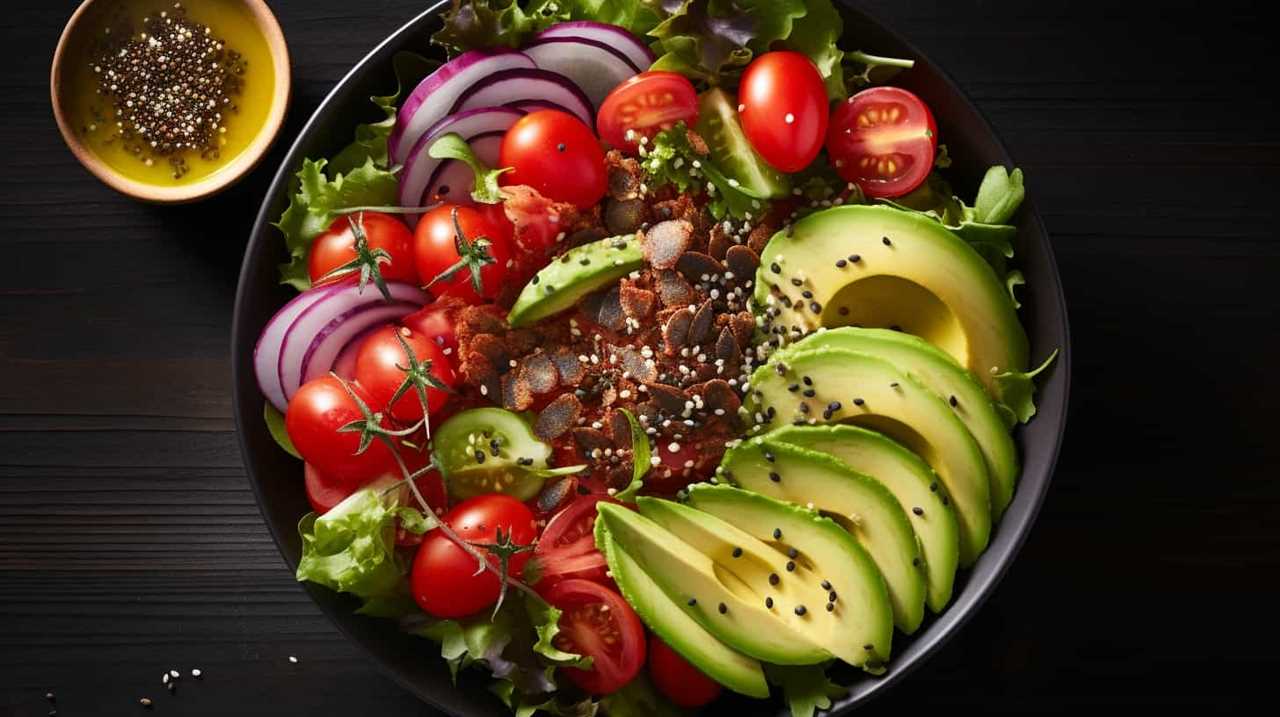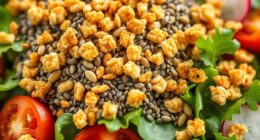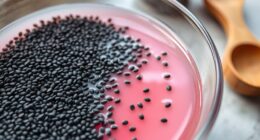Tired of mediocre gluten-free baked goods? Look no further! The secret to mastering gluten-free baking has been revealed: chia seeds.
These tiny powerhouses are not only a proven seed alternative but also a game-changer in the world of gluten-free baking. With their binding properties and nutritional benefits, chia seeds will revolutionize your recipes.
Get ready to create delectable treats that will leave everyone begging for more. Let’s dive into the art of gluten-free baking with chia seeds and serve up some incredible goodies!
Key Takeaways
- Chia seeds are a nutritious and versatile ingredient for gluten-free baking, offering benefits like improved digestion, increased energy levels, and enhanced heart health.
- Chia seeds can be used as a substitute for eggs in gluten-free recipes, providing the necessary binding properties and creating a desirable texture and consistency.
- Incorporating chia seeds into gluten-free baked goods enhances both the flavor and nutritional value, as they are rich in omega-3 fatty acids and dietary fiber.
- Ground flaxseeds and psyllium husk can be used as alternative seed options in gluten-free baking, offering similar properties and creative ways to use them in desserts.
The Benefits of Using Chia Seeds in Gluten-Free Baking
Using chia seeds in gluten-free baking provides numerous benefits for us. Chia seeds are packed with nutrients and are an excellent source of fiber, omega-3 fatty acids, and antioxidants. Incorporating chia seeds into our gluten-free recipes not only enhances the nutritional value but also adds a delightful texture and taste.
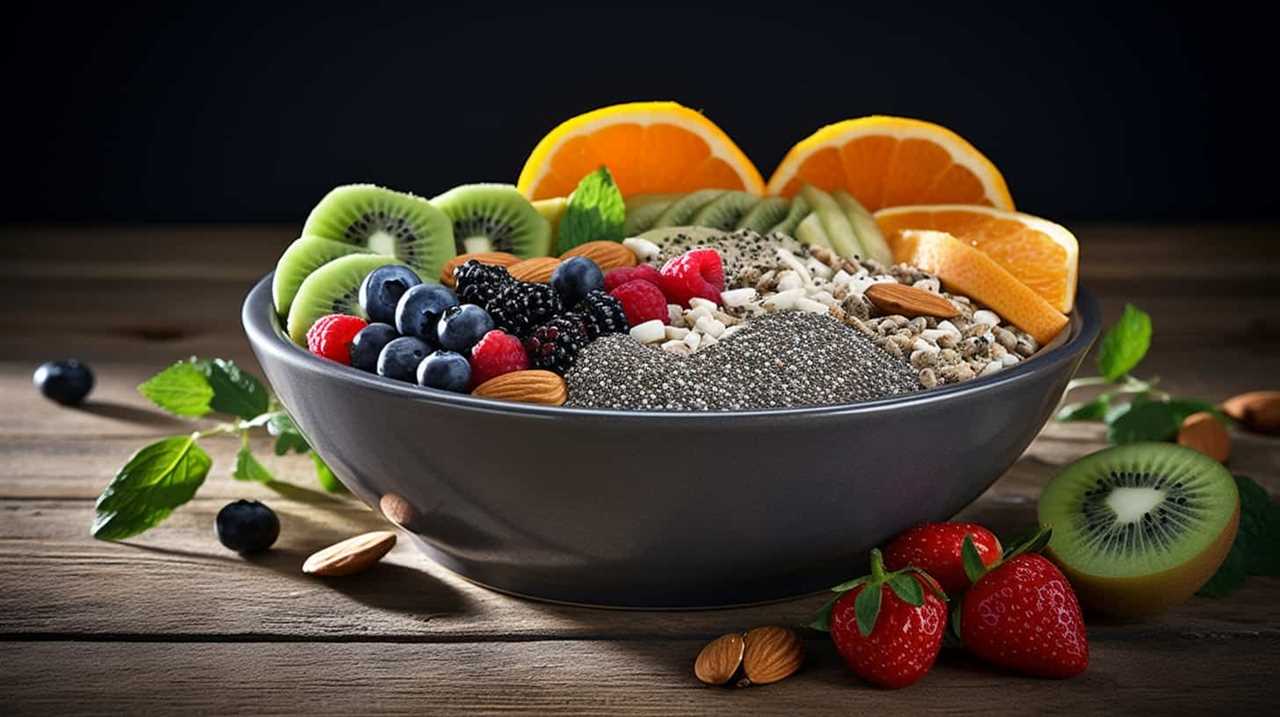
These tiny seeds can be used in a variety of chia seed recipes, such as chia seed pudding, chia seed bread, and chia seed crackers. The benefits of chia seeds include improved digestion, increased energy levels, and enhanced heart health. Additionally, chia seeds are gluten-free, making them a perfect option for those with gluten sensitivities or celiac disease.
Now that we understand the benefits, let’s explore how to incorporate chia seeds into our gluten-free recipes.
How to Incorporate Chia Seeds Into Your Gluten-Free Recipes
We frequently incorporate chia seeds into our gluten-free recipes to enhance nutritional value and add a delightful texture and taste.
Here are three ways you can incorporate chia seeds into your own gluten-free recipes:
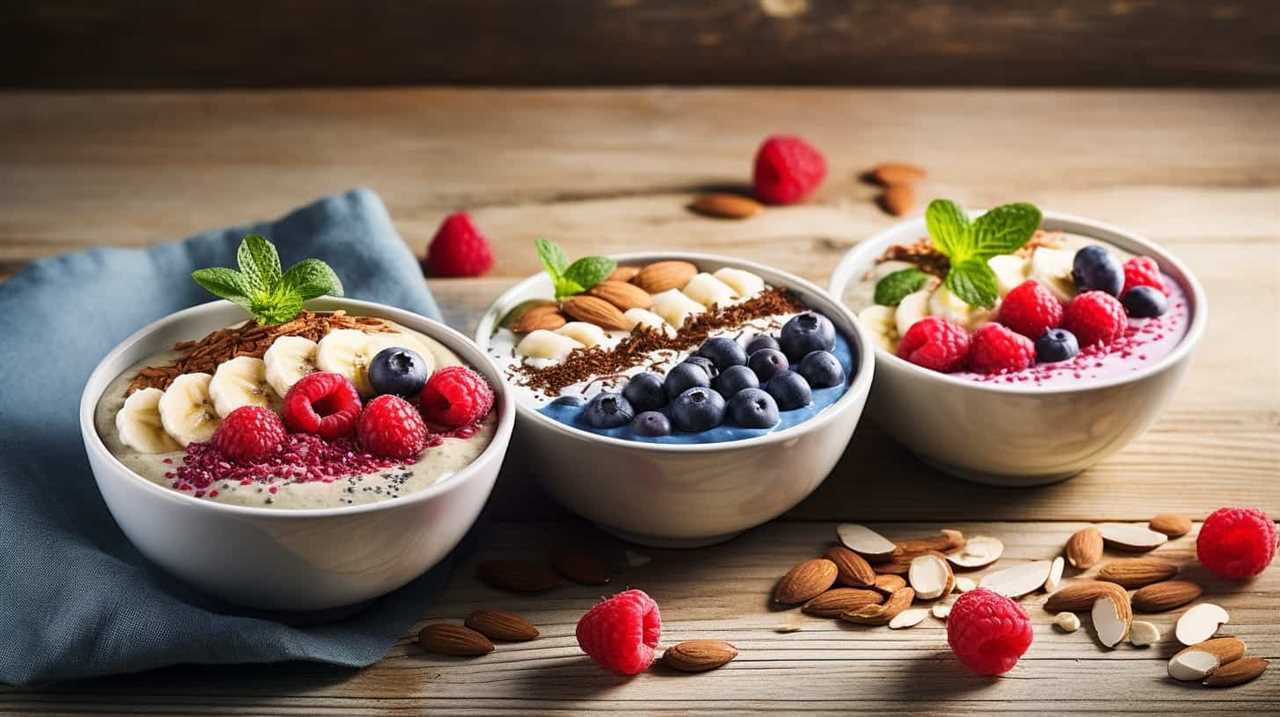
- Chia Seed Recipes: Chia seeds can be added to a variety of recipes, including smoothies, oatmeal, and baked goods. They can be used as a topping for yogurt or mixed into homemade granola for an added crunch.
- Chia Seed Substitutions: Chia seeds can be used as a substitute for eggs in many recipes. To replace one egg, simply mix one tablespoon of chia seeds with three tablespoons of water and let it sit for a few minutes until it becomes gel-like. This can then be used as an egg replacement in recipes like pancakes, muffins, or cookies.
- Chia Seed Pudding: Chia seeds can be soaked in liquid, such as almond milk or coconut milk, to create a delicious and nutritious pudding. Simply mix together the chia seeds and liquid, let it sit in the refrigerator overnight, and enjoy a creamy chia seed pudding the next morning.
By incorporating chia seeds into your gluten-free recipes, you can enhance the nutritional value and create delicious and satisfying dishes.
Now let’s explore how chia seeds can also act as a binding agent in gluten-free baking.
Chia Seeds as a Binding Agent in Gluten-Free Baking
Chia seeds serve as an effective binding agent in gluten-free baking. When used as an egg substitute, chia seeds can provide the necessary stickiness and moisture to hold ingredients together. Thanks to their high fiber content, chia seeds can also act as a thickening agent in gluten-free recipes, helping to create a desirable texture and consistency.
When combined with liquid, chia seeds form a gel-like substance that mimics the binding properties of eggs. This makes them an excellent choice for individuals who follow a vegan or egg-free diet. Moreover, chia seeds are rich in omega-3 fatty acids, antioxidants, and other nutrients, making them a nutritious addition to gluten-free baked goods.

Enhancing the Nutritional Value of Gluten-Free Baked Goods With Chia Seeds
To maximize the nutritional benefits of gluten-free baked goods, incorporating chia seeds is essential. Chia seeds are a versatile ingredient that can enhance both the flavor and nutritional value of your gluten-free creations.
Here are three ways in which chia seeds can boost the nutritional value of your baked goods:
- Rich in Omega-3 Fatty Acids: Chia seeds are packed with these essential fatty acids, which are known for their numerous health benefits, including reducing inflammation and supporting brain health.
- High in Fiber: Chia seeds are an excellent source of dietary fiber, which can aid in digestion, regulate blood sugar levels, and promote feelings of fullness.
- Chia Seed Substitutions: You can use chia seeds as a substitute for eggs in your gluten-free baking recipes. This is especially beneficial for those with egg allergies or following a vegan diet.
Tips and Tricks for Perfecting Gluten-Free Baking With Chia Seeds
How can we ensure perfect gluten-free baking with the addition of chia seeds? Chia seeds are a versatile ingredient that can be used to enhance the texture and flavor of gluten-free baked goods. Here are some tips and tricks to help you achieve the best results:
- Chia seed substitutes for gluten-free baking:
- Ground flaxseeds: Similar in texture and binding properties to chia seeds.
- Psyllium husk: Adds moisture and elasticity to gluten-free dough.
- Creative ways to use chia seeds in gluten-free desserts:
- Chia seed pudding: Mix chia seeds with a dairy-free milk alternative and sweeten with natural sweeteners like honey or maple syrup.
- Chia seed flour: Grind chia seeds into a fine powder and use as a gluten-free flour substitute in recipes.
Frequently Asked Questions
Are Chia Seeds the Only Seed Alternative for Gluten-Free Baking?
Chia seeds are one of the alternative seeds for gluten-free baking. They offer numerous benefits, such as being high in fiber and omega-3 fatty acids. However, there are other seed alternatives available as well.
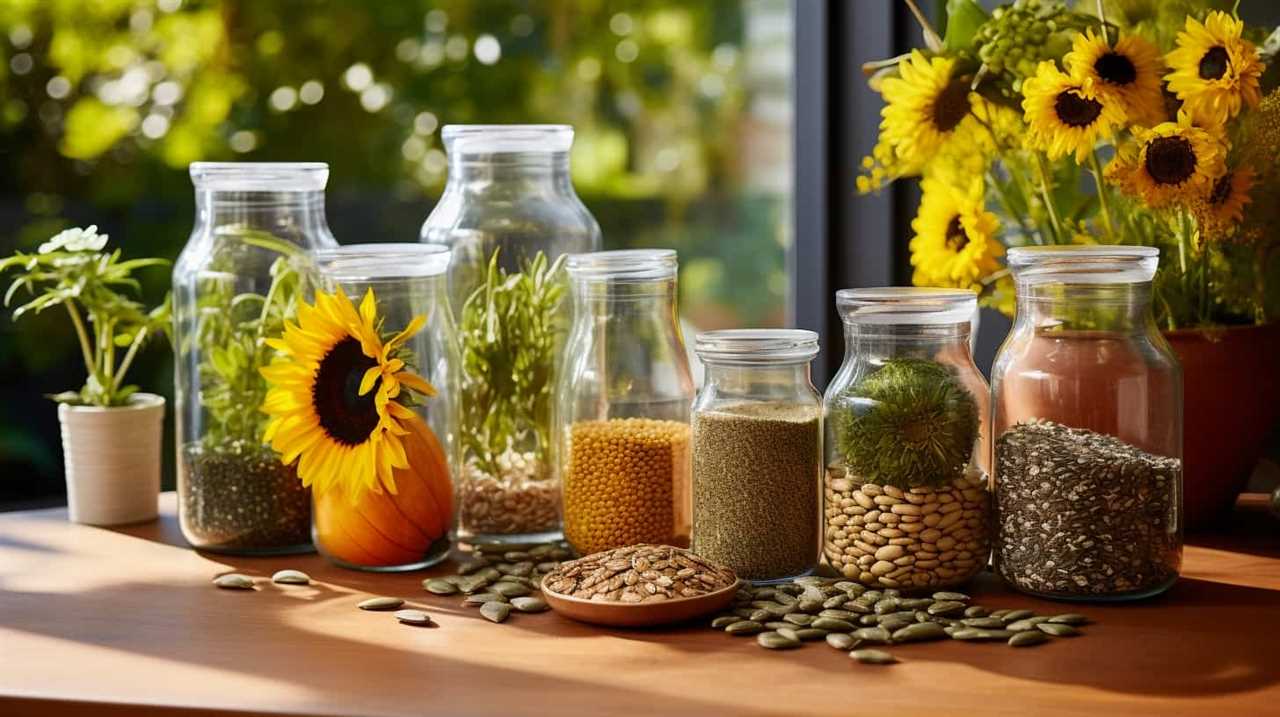
Can I Substitute Chia Seeds With Other Binding Agents in Gluten-Free Baking?
Yes, we can substitute chia seeds with other binding agents in gluten-free baking. While chia seeds have many benefits, other options like flaxseeds, psyllium husk, and xanthan gum can also provide similar binding properties in baking.
How Long Do Chia Seeds Need to Soak Before Using Them in Gluten-Free Baking?
Chia seeds need to soak for at least 10-15 minutes before using them in gluten-free baking. This allows them to form a gel consistency, which helps to bind the ingredients together. Soaking chia seeds also enhances their nutritional benefits.
Can Chia Seeds Be Used in All Types of Gluten-Free Recipes, Including Bread and Pastries?
Yes, chia seeds can be used in all types of gluten-free recipes, including bread and pastries. They provide numerous benefits for overall health and well-being. Here are some tips for incorporating chia seeds into everyday gluten-free cooking.
Are There Any Potential Allergies or Sensitivities to Chia Seeds That I Should Be Aware of When Using Them in Gluten-Free Baking?
Yes, there can be potential allergies or sensitivities to chia seeds when used in gluten-free baking. However, chia seeds are a versatile and nutritious seed alternative for gluten-free baking.
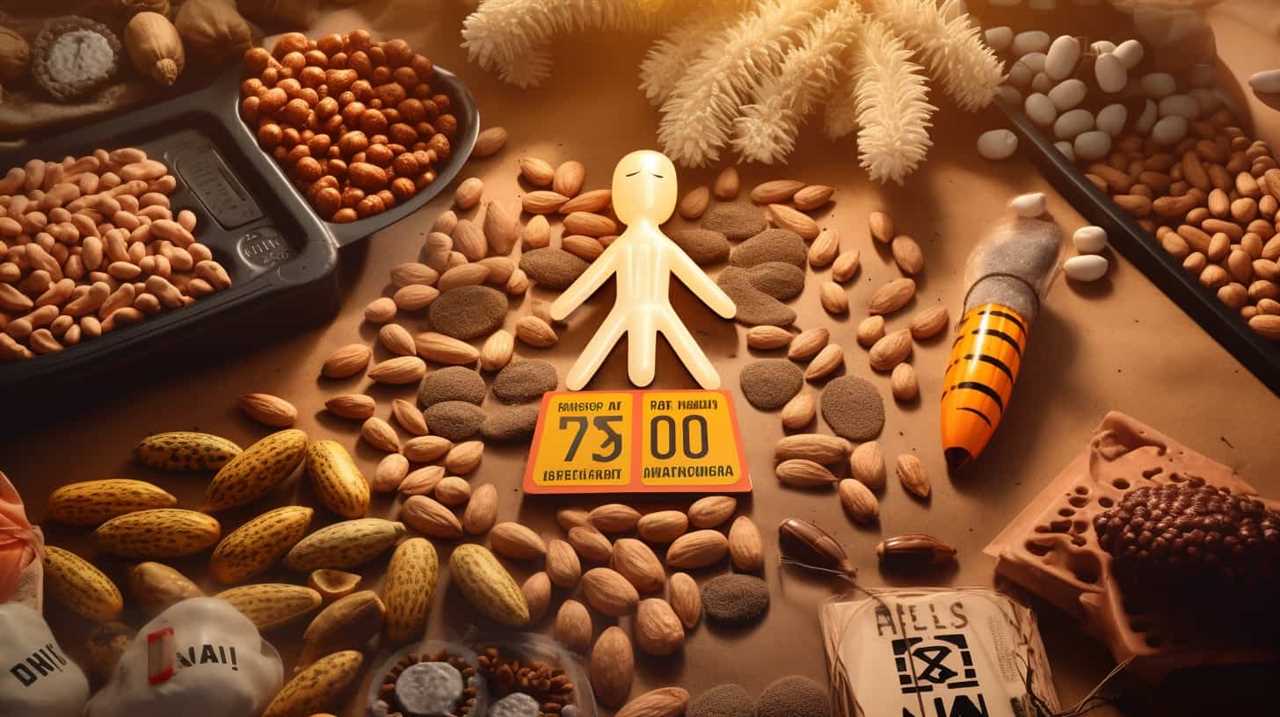
Conclusion
In conclusion, chia seeds are a game-changer in gluten-free baking. Their ability to act as a binding agent and enhance the nutritional value of baked goods makes them a must-have ingredient.
By incorporating chia seeds into your recipes, you can achieve delicious and satisfying gluten-free treats.
So why wait? Start mastering gluten-free baking with the proven seed alternative that will leave you feeling amazed and your taste buds dancing with joy!
